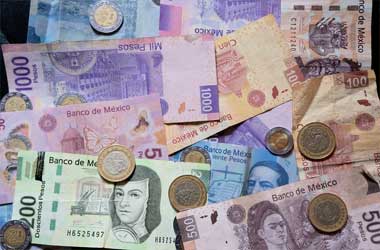 Australia’s unemployment rate inched upwards to 7.5% in July, from 7.4% in prior month, but exceeded market’s expectations for an increase in jobless rate to 7.8%. The outbreak of Coronavirus disease increased the jobless rate to the highest level since November 1998. Reflecting the increase in jobless rate, unemployment people rose by 15,700 to 1,009,400. Part-time job seekers increased 18,400 to 278,800.
Australia’s unemployment rate inched upwards to 7.5% in July, from 7.4% in prior month, but exceeded market’s expectations for an increase in jobless rate to 7.8%. The outbreak of Coronavirus disease increased the jobless rate to the highest level since November 1998. Reflecting the increase in jobless rate, unemployment people rose by 15,700 to 1,009,400. Part-time job seekers increased 18,400 to 278,800.
On the contrary, full time job seekers decreased 2,700 to 730,600. Overall, employment increased 114,700 to 12,460,800, surpassing expectations for a 40,000 increase, as full-time employment increased 43,500 to 8,547,100 and part-time employment rose by 71,200 to 3,913,600. The participation rate increased to a four-month high of 64.7%, beating forecasts of 63.4%. The underemployment rate decreased 0.5% to 11.2% and the underutilization rate fell 0.4% to 18.7%. Collectively, monthly hours worked increased to 21.70 million hours or 5% to 1,681.30 million hours.
The country’s wage price index increased 1.8% y-o-y in 2Q20, easing from an upwardly amended 2.2% growth in the earlier period and lower than the 1.9% figure anticipated by analysts. It was the weakest growth ever documented, reflecting the entire time span of Covid-19 prohibitions (social and business) in Australia. While private sector wage growth eased to 1.7%, compared with 2.1% in the first-quarter, public sector wages slowed to 2.1% against 2.4% since the series began to be published. Annual wage rise across industries ranged from 0.8% for the construction sector to 2.6% for the arts and leisure services sector. On q-o-q basis, the wage price index rose by 0.2%, the lowest ever, following a 0.5% increase in the first-quarter.
A separate news release indicated that the Melbourne Institute and Westpac Bank Consumer Sentiment Index for the country fell by 9.5% m-o-m to 79.5 in August, following a 6.1% decline in the prior month as sentiment was haunted by lockdown in Victoria. All five components of the index declined. Economic environment for the forthcoming 12 months posted the greatest decline, plunging 19.2% to 66.4 due to worries that the impact of virus would be long-lasting. Conditions for upcoming 5 years plummeted 8.7% to 83.9. Likewise, finances for the forthcoming 12 months sub-index slumped 7.3% to 91.1.
Similarly, the National Australia Bank’s index of business confidence plummeted to -14 in July, from a downwardly amended zero in the earlier month, against the backdrop of uncertainties encircling the coronavirus pandemic before enforcing a revised stage 4 prohibition in Melbourne and stage 3 limitations in remaining part of Victoria.
Confidence declined across all sectors, mainly due a steep drop in mining. Construction and retail industry also posted comparatively small decreases. On the contrary, business environment improved with the index reaching zero in July, from -8 in June, against the backdrop of increases in sales, which recorded a reading of one, compared with 6 in the earlier month. Also, employment scenario improved to -2 from -11. Fresh orders and capacity utilization increased marginally, with both remaining extremely weak compared with history.
Commenting on the capacity utilization and fresh orders, Alan Oster, NAB Group chief economist, said “While the improvement in conditions is very welcome, capacity utilization and forward orders point to ongoing weakness overall. Therefore, with confidence still fragile there is some risk that conditions lose some of their recent gains in the coming months.”




